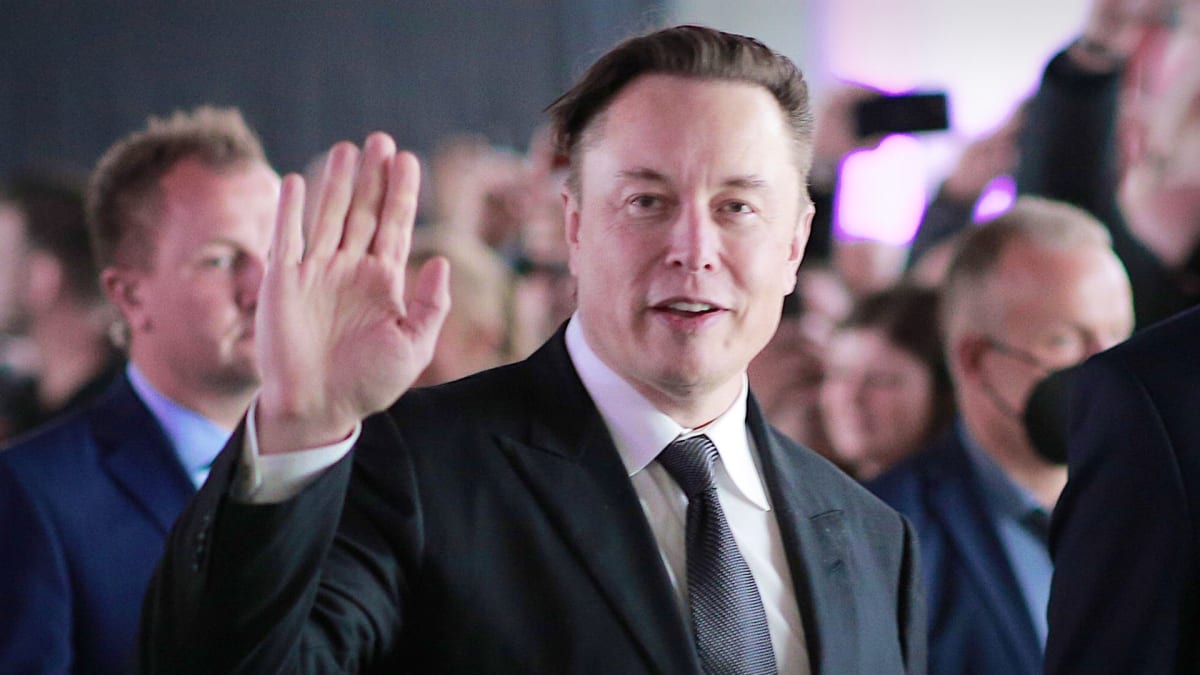
Elon Musk is in control of Twitter (TWTR).
The billionaire, who spent $44 billion to acquire the platform after a battle marked by many twists and turns and a court case, is quick to leave his mark on the town square of our time.
And for those who have followed the CEO of Tesla (TSLA) for many months, the first days at the helm of Twitter are characteristic of the personality of the serial entrepreneur.
U-Turn
Musk started by firing four top executives, including CEO Parag Agrawal, during his first hours in office on Oct. 27-28. The purge continued with the dismissal of all board members.
On a single day, on Nov. 4, he fired nearly half of Twitter's workforce, or 3,700 people, over email. These massive job cuts are part of a drastic cost reduction plan.
But less than two days later, Twitter is asking some of those fired to come back to work, Platformer reported. The group realized it had fired some people by mistake, as the new owners failed to realize that key employees were necessary to accomplish Musk's vision.
It is difficult to know the number of fired people who have been asked to return.
"From Twitter Slack: 'sorry to @- everybody on the weekend but I wanted to pass along that we have the opportunity to ask folks that were left off if they will come back. I need to put together names and rationales by 4PM PST Sunday.”
Twitter did not immediately respond to a request for comment.
Bugs
Musk on Nov. 5 rolled out on the new Twitter Blue, the monthly subscription offered by the platform, priced at $7.99, in five countries - United States, Canada, United Kingdom, Australia and New Zealand.
This service now includes the blue badge that tells users that the person is who they say they are. Basically, their identity has been authenticated. Generally, politicians, companies, institutions and celebrities are fond of this badge because it allows them to communicate directly without going through the traditional media. This badge was previously free. Blue also offers additional features and Musk has promised new features in the future.
It wasn't long after the new Blue was rolled out that many celebrities and regular users changed their account handles and posed as Elon Musk. One such celebrity is actress Kathy Griffin, whose account was immediately suspended.
The purpose of the impersonators was to prove that it was possible to impersonate someone with the new formula.
The lesson was learned as Twitter decided to postpone granting the blue badge to new Blue subscribers until Nov. 9. The social network wants to avoid people impersonating politicians and other institutions to disrupt the course of the midterm elections on Nov. 8.
Internally, employees also pointed out that users could abuse the new account verification process.
Threats
Faced with evidence that it was possible to use the new Blue service to impersonate someone, Musk announced punishing measures.
He who has always said that he is against permanent bans, now threatens impersonators with that.
"Going forward, any Twitter handles engaging in impersonation without clearly specifying 'parody' will be permanently suspended,” he said on Nov. 6.
"Previously, we issued a warning before suspension, but now that we are rolling out widespread verification, there will be no warning. This will be clearly identified as a condition for signing up to Twitter Blue.”
"Any name change at all will cause temporary loss of verified checkmark.”
The billionaire also made another threat. This was made to advertisers. He threatened to publicly expose them by giving his millions of fans the names of advertisers who are suspending the promotion of their products and services on Twitter.
He will claim that these advertisers are anti-free speech, despite the fact that they want to see what content management policy he puts in place before deciding if it fits with their brands and the values with which they want to be associated.
Twitter currently generates more than 91% of its revenue from advertising.
"Twitter has had a massive drop in revenue, due to activist groups pressing advertisers, even though nothing has changed with content moderation and we did everything we could to appeal to the activists. Extremely messed up! They’re trying to destroy free speech in America," the technoking posted on Nov. 4.
A few hours later Musk added:
"A thermonuclear name & shame is exactly what will happen if this continues,” responding to a user asking him to use the tactic of naming and shaming to provoke a boycott of the brands in question.
Promises
Musk has vowed to make Twitter the most "accurate" source of news at a time when deep divisions in society mean that mainstream media is shunned and viewed as fake news by a large majority of the population.
"Twitter needs to become by far the most accurate source of information about the world. That’s our mission,” he posted on Nov. 6.
This is a huge challenge coming from someone who, a few days ago, promoted a conspiracy theory about the violent assault on Paul Pelosi, the husband of House Speaker Nancy Pelosi.
But, there is a promise that must please the billionaire who is under financial pressure after going into debt of $13 billion with banks to finance the acquisition of Twitter. This promise is the growing interest in Twitter:
"Twitter user numbers have increased significantly around the world since the deal was announced. And these are very early days. As Twitter becomes by far the most reliable source of truth, it will be indispensable.”
Wars, Enemies
Musk wants to make Twitter a Super App where you can order a meal, buy a plane ticket, chat with your friends, do your shopping online, etc.
To achieve this, he needs to make the platform attractive to the creators/influencers, who have made his competitors successful. Advertisers follow creators/influencers, which explains why the bulk of advertising revenue on social networks is shared between YouTube (GOOGL), Instagram, Facebook (META), Snapchat (SNAP) and TikTok.
Musk wants a big chunk of that lucrative market. He has therefore designated his two main rivals, which are also two of the platforms highly courted by advertisers: TikTok and YouTube. He is determined to give creators a better share of ad revenue than YouTube is giving them and wants to resurrect Vine, the pioneering short-video app that Twitter buried in 2016.
"How does YouTube monetization work & what could Twitter do better?” He asked on November, adding that Twitter will beat whatever YouTube offers.
"What could we do to make it better than TikTok?” he asked Twitter users on Oct. 31.
This question was part of a thread he started asking if he should bring Vine back.
"Bring back Vine?" he asked on Oct. 30.







